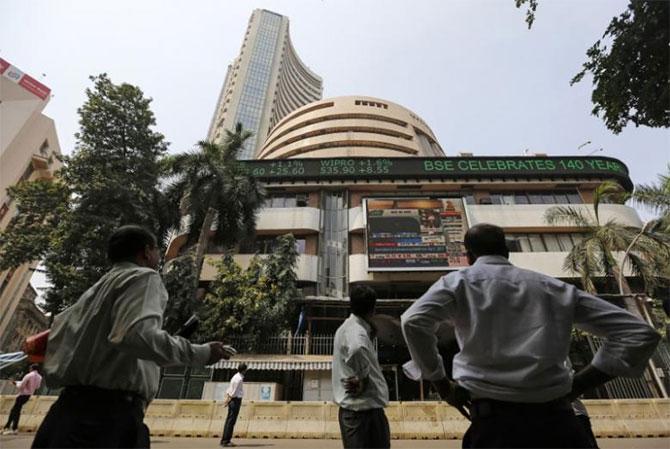The gap between the highs and the lows in April for the benchmark S&P BSE Sensex was just 4.1 per cent — the narrowest since July 2021 and nearly half its three-year average.

The absence of major positive triggers, sectoral rotation, and cautiousness due to earnings and economic uncertainty have kept a tight leash on the markets, observe experts.
Remarkably enough, during the 17 trading sessions in April, the Sensex didn’t even log an advance or a decline of more than 1 per cent.
Its best trading session for the month was on April 3, when it gained 0.99 per cent; the worst was on April 17, when it fell 0.87 per cent.
In April, the Sensex touched an intraday high of 61,209 and a low of 58,793 before ending at 61,112, with a gain of 3.35 per cent over the previous month.
In the past three years, the Sensex moved in an average band of 8 per cent each month.
While the index has been making positive strides over the past month, it is still moving at a snail’s pace.
This, say experts, is a sign of nervousness among traders.
Some believe that the rotation from large-caps to small-caps has capped the upmove for the benchmark indices.
“Since April, small-caps have been performing better at the cost of large-cap stocks.
"That’s the single biggest factor for the narrow range for the headline indices,” says Chokkalingam G, founder, Equinomics Research & Advisory.
In April, the Nifty Smallcap 100 surged 7.5 per cent — the most in nearly 10 months.
Meanwhile, the Nifty Midcap 100 rose nearly 6 per cent — the most in nearly eight months.
The Nifty50 rose 4.1 per cent during the month.
“Even in May, I expect the Sensex and the Nifty to trade in a narrow range.
"For the next two months, the small- and mid-caps will continue to rally.
"Most small-caps have corrected sharply and retail investors are doing some bargain hunting,” adds Chokkalingam.
Investors didn’t just rotate from large-caps to the broader markets.
They also undertook some sectoral rotation, moving away from information technology (IT) stocks and into high-beta sectors like realty and public sector banks.
The Nifty Realty rose nearly 15 per cent in April, while the Nifty PSU Bank jumped 12 per cent.
Meanwhile, the Nifty IT fell close to 4 per cent after major IT exporters lowered their revenue guidance amid turmoil in the banking sector in the developed world.
The weakness in IT stocks, which have a significant weighting in the benchmark Sensex and the National Stock Exchange Nifty, weighed on market performance.
In the past, the narrow range for the market has proved to be an encouraging sign.
Some see the market moving in a tight range as a sign of consolidation.
For instance, after trading listlessly in July 2021, the markets went on to gain 12 per cent over the next two months.
Analysts say if the markets continue to consolidate around the current levels, it will help in the moderation of valuation, creating ground for the next big upmove.
“The indices are consolidating at every level before moving up.
"The markets are on an upward trajectory.
"Monsoon and economic data will be the next big triggers.
"The goods and services tax numbers have hit an all-time monthly high.
"These numbers keep telling you that the Indian economy continues to perform well. India will be one of the very few economies which will continue to grow when the rest of the major economies are slowing down,” says Ambareesh Baliga, an independent equity analyst.











